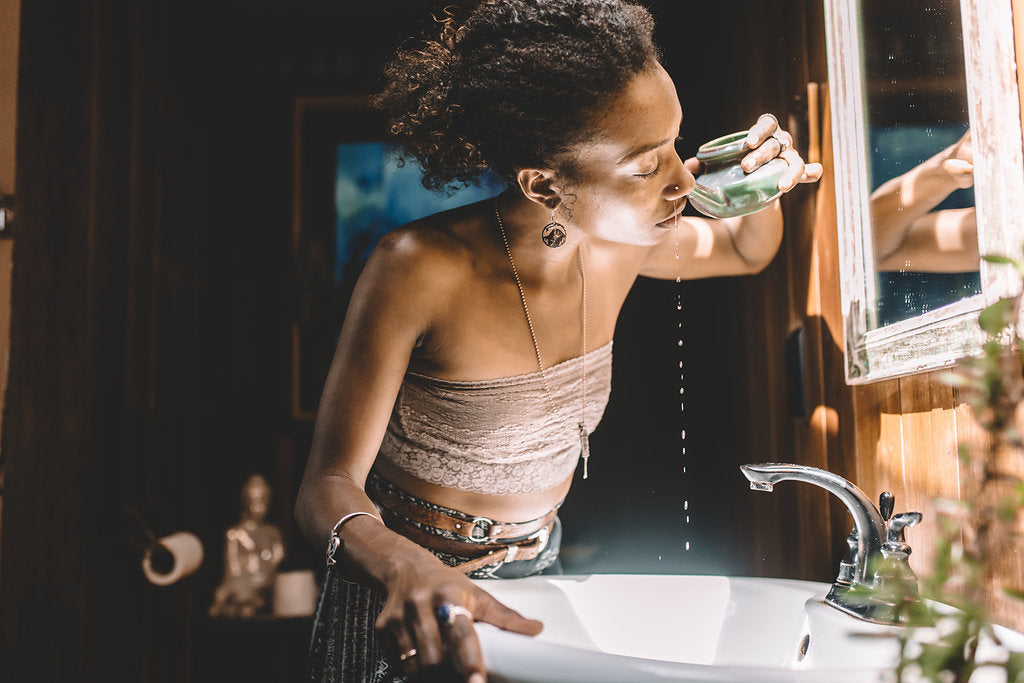
Neti & Nasya: Ayurvedic Practices for Optimal Wellness
Spring, Ayurvedically known as kapha season, is upon us in the Northern Hemisphere and despite the variable weather, we can feel the temperature beginning to warm at home here in Northern California. While strolling along the Buttermilk Trail in Grass Valley last weekend, I had the pleasure of witnessing a parade of butterflies kissing and dancing among the wildflowers. California poppies and daffodils are bravely emerging and dazzling us with their brilliant gold, yellow and white faces. Up at Ananda Village, the multitude of tulips have burst from their bulbs and have visitors lining up to be in their presence. The snow is beginning to melt on the Sierra Nevada Mountain Range and people are getting their last winter activities in while they can. Within all of this fresh spring activity, many of us are recovering from lingering colds, coughs, allergies and even the flu. Although beautiful, the transition into spring weather and kapha season can be rather challenging for our bodies; especially our respiratory systems. To better support ourselves during this time of year, we would like to share with you the ancient Ayurvedic ritual of neti and nasya.
Neti and nasya are traditional Ayurvedic rituals that have been performed for thousands of years by yoga practitioners. Yogis discovered that these practices help open the sinuses, increase the flow of prana and deepen the practice of pranayama (breathing exercises). Even if you are not a yogi, there are a plethora of reasons to begin to incorporate neti and nasya into your daily ritual.
The Ayurvedic Practice of Neti
The term ‘neti’ literally means ‘to guide’. As Dr. David Frawley explains in his book, Neti: Healing Secrets of Yoga & Ayurveda, neti “refers to the water that guides or draws our energy through the nasal passages, opening them up along the way”. For the water to enter our nasal passageways, we need to use a neti pot. If you have never seen a neti pot, it is typically ceramic and looks like a small teapot with a long spout that fits comfortably into the nostrils. You can find a neti pot at your local natural food store, yoga studio, Ayurveda centers or online at PAAVANI Ayurveda.
The Ayurvedic Practice of Nasya
Nasya is the Ayurvedic term for oiling the nose. Nasya oil can be used on its own or in conjunction with a neti pot to cleanse, moisturize and protect the nasal passageways. Traditionally, nasya oil is a blend of sesame oil infused with organic herbs that help clear and restore the nasal passageways and sinuses while also clarifying the mind. PAAVANI continues in the Ayurvedic tradition with our handmade, organic Nasya Oil. This blend is formulated with carrier oils, sesame and sunflower oils and infused with gotu kola, brahmi, shankh pushpi, tulsi, fennel, rose and essential oils of eucalyptus, laurel leaf, peppermint, lemon, cardamom, ravensara and tea tree. This formula is appropriate for all doshas and helps to restore the vitality of the respiratory system, oleate the nostrils and promote proper breathing. Nasya oil also makes an excellent travel companion. One can use nasya oil on a plane or in an airport to hydrate the nasal passages, protect from pathogens and support a healthy journey.
In our modern world, poor air quality is rampant. Pollution, chemicals and smog are typical in urban environments and negatively affect our breathing. As we inhale, our nose acts as a filter, trapping pathogens in the air; however, we often neglect cleansing away the debris. Through the practice of neti and nasya, we are able to effectively cleanse the nasal passageway, remove excess mucous, improve focus, to support brain function and strengthen vitality.
Some conditions that can greatly benefit from these practices include sinus allergies, deviated septum, nasal polyps, colds and flu, poor digestion, headaches, asthma, constipation, obesity, acne, arthritis, heart disease, insomnia, weak immune function, chronic fatigue, depression and anxiety. Please note, the use of neti and nasya alone may not cure these conditions; yet, the use of these simple, effective practices can help reduce symptoms of dis-ease.
How to Practice Neti & Nasya
The best time of day to perform the neti and nasya rituals is first thing in the morning. Mucus can accumulate while we lie supine in our sleep, and it is best to remove this, as well as any lingering toxins that are ready to be dispelled from the body. Here’s how it’s done.
How to Neti
- Mix warm, salt water solution inside neti pot. We recommend boiling the water and let it cool or used distilled water to ensure there is no contamination. Begin with ¼ tsp of salt per ½ cup of water. *Please note, you can increase the amount of salt if the solution stings your nose.
- Stand in front of your sink and place the tip of the pot’s spout in one nostril.
- Tilt your head to one side and insert the spout of the neti pot into your nostril. Keep your head tilted and let the solution enter the nasal passage and flow in one nostril and out the other. *It is important to keep the mouth open and the head tilted so water does not come into the back of the throat.
- Mix new solution and repeat for other nostril.
- Upon completion, blow your nose with a tissue to expel any remaining mucous and water.
- Following neti, oil nasal passages with nasya oil to avoid dryness.
How to Nasya
DAILY USE: Place 1-2 drops on clean fingertip & apply into nostril. Repeat on opposite side. WEEKLY USE: With head tilted back, apply 3-5 drops of oil into nostril. Inhale Deeply. Repeat on the opposite side.
Yoga and Ayurveda teach us that the breath is one of the most powerful tools for transformation that we hold. Neti and nasya help us to breathe deeply and connect fully with our world. If you have not yet experienced these ancient practices, we encourage you to give them a try this spring. Wishing you a vital, joyful and healthy season!
Ayurvedic Health & Hygiene
Works Cited
Frawley, David. Neti: Healing Secrets of Yoga & Ayurveda. Twin Lakes, Wisconsin. Lotus Press. 2005.





Leave a comment
This site is protected by hCaptcha and the hCaptcha Privacy Policy and Terms of Service apply.